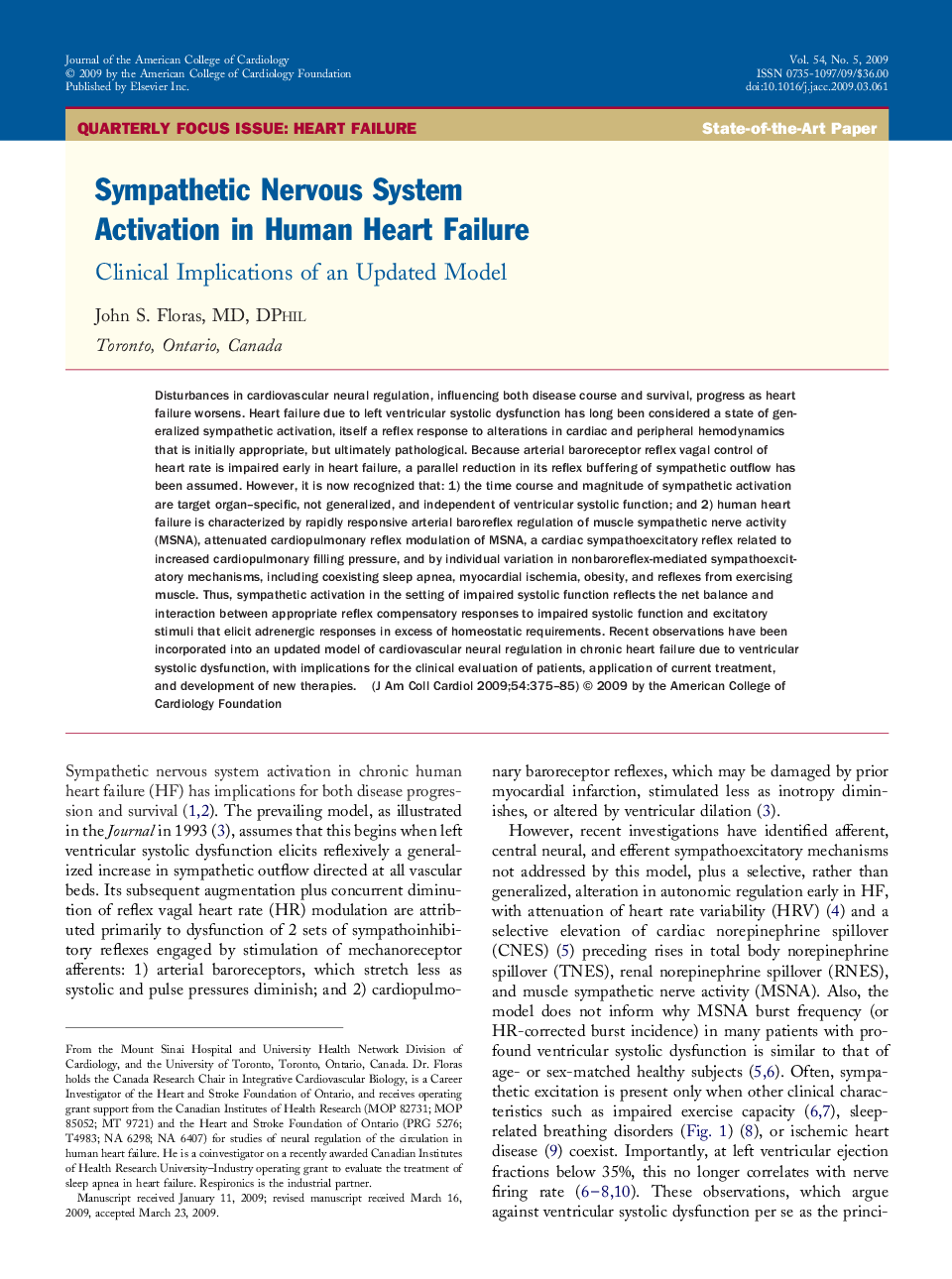| Article ID | Journal | Published Year | Pages | File Type |
|---|---|---|---|---|
| 2950992 | Journal of the American College of Cardiology | 2009 | 11 Pages |
Disturbances in cardiovascular neural regulation, influencing both disease course and survival, progress as heart failure worsens. Heart failure due to left ventricular systolic dysfunction has long been considered a state of generalized sympathetic activation, itself a reflex response to alterations in cardiac and peripheral hemodynamics that is initially appropriate, but ultimately pathological. Because arterial baroreceptor reflex vagal control of heart rate is impaired early in heart failure, a parallel reduction in its reflex buffering of sympathetic outflow has been assumed. However, it is now recognized that: 1) the time course and magnitude of sympathetic activation are target organ–specific, not generalized, and independent of ventricular systolic function; and 2) human heart failure is characterized by rapidly responsive arterial baroreflex regulation of muscle sympathetic nerve activity (MSNA), attenuated cardiopulmonary reflex modulation of MSNA, a cardiac sympathoexcitatory reflex related to increased cardiopulmonary filling pressure, and by individual variation in nonbaroreflex-mediated sympathoexcitatory mechanisms, including coexisting sleep apnea, myocardial ischemia, obesity, and reflexes from exercising muscle. Thus, sympathetic activation in the setting of impaired systolic function reflects the net balance and interaction between appropriate reflex compensatory responses to impaired systolic function and excitatory stimuli that elicit adrenergic responses in excess of homeostatic requirements. Recent observations have been incorporated into an updated model of cardiovascular neural regulation in chronic heart failure due to ventricular systolic dysfunction, with implications for the clinical evaluation of patients, application of current treatment, and development of new therapies.
